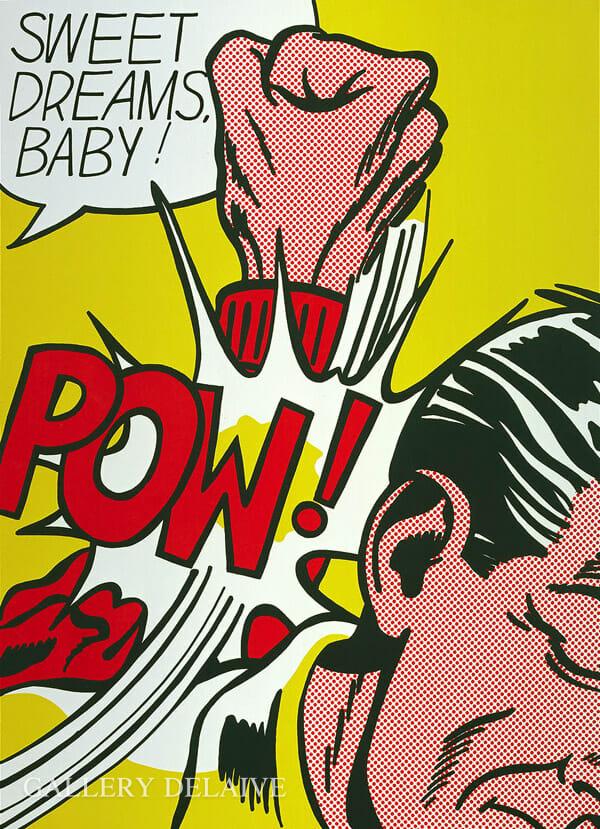About Roy Lichtenstein
Roy Lichtenstein is a pop art painter whose works, in a style derived from comic strips, portray the trivialization of culture endemic in contemporary American life. Using bright, strident colors and techniques borrowed from the printing industry, he ironically incorporates mass-produced emotions and objects into highly sophisticated references to art history.
Born in New York City in 1923, Lichtenstein studied briefly at the Art Students League, then enrolled at Ohio State University. After serving in the army from 1943 to 1946, he returned to Ohio State to get a master’s degree and to teach.
In 1951, Lichtenstein came back to New York City and had his first one-man show. He also continued to teach, first at the New York State College of Education at Oswego, and later at Douglass College, a division of Rutgers University in New Jersey.
Through the 1950s, Lichtenstein used the basic techniques of abstract expressionism, but incorporated into his compositions such themes as cowboys and Indians and paper money. In 1961, however, while at Douglass College, impressed by the work of colleague Allan Kaprow, he turned to the use of comic-strip and cartoon figures by which he is known today. Flatten… sandfleas (1962, Museum of Modern Art) was the first important example of his new style.
Primary colors–red, yellow and blue, heavily outlined in black–became his favorites. Occasionally he used green. Instead of shades of color, he used the benday dot, a method by which an image is created, and its density of tone modulated in printing. Sometimes he selected a comic-strip scene, recomposed it, projected it onto his canvas and stenciled in the dots. “I want my painting to look as if it had been programmed,” Lichtenstein explained.
Despite the fact that many of his paintings are relatively small, Lichtenstein’s method of handling his subject matter conveys a sense of monumental size. His images seem massive.
Since 1962, he has turned to the work of artists such as Picasso, Mondrian, and even Monet as inspiration for his work. In the mid-1960s, he also painted sunsets and landscapes in his by-now familiar style. In addition, he has designed ceramic tableware and graphics for mass production.
“I’m interested in portraying a sort of antisensibility that pervades society,” Lichtenstein says, summing up his work.
For buying and selling works by Roy Lichtenstein please contact the gallery.
For more information about the artist: www.lichtensteinfoundation.org


